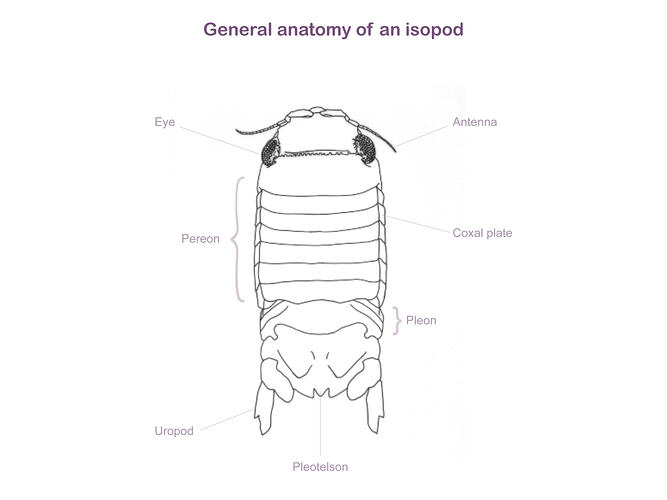General Description
Body cylindrical, with prominent antennae. The first four pairs of legs are thin and with rows of hairs; the last three pairs are more stubby and attach the animal. The body bends between the elongate fourth body segment and the fifth, up to 15 mm long.
Biology
Neastacilla kanowna although first collected from Victorian waters in the 1980's, was not formally described until 2003. The species name, "kanowna" is an Australian Aboriginal name for the sea. This species of skeleton louse is one of the largest at around 15 mm in length.
Distribution
Southern temperate oceans, including south-eastern Australia.
Habitat
Subtidal attached to algae or bryozoans to depths of 29 m.
More Information
-
Animal Type
-
Animal SubType
-
Brief Id
Antennae prominent, body cylindrical, with thin filtering legs in the front and short legs at the back. Fourth body segment extraordinarily long with body bent at a right angle to hold feeding legs up.
-
Maximum Size
15 mm
-
Habitats
-
Diet
Plankton or Particles
-
Diet Categories
Organic matter
-
Endemicity
-
Commercial
No
-
Conservation Statuses
DSE Advisory List: Not listed, EPBC Act 1999: Not listed, IUCN Red List: Not listed
-
Depths
Shallow (1-30 m)
-
Water Column Locations
On or near seafloor
-
Taxon Name
-
Scientific Author
King, 2003
-
Common Name
Skeleton Louse
-
Phylum
-
Subphylum
-
Superclass
-
Class
-
Subclass
-
Superorder
-
Order
-
Suborder
-
Family
-
Genus
-
Species Name
kanowna

